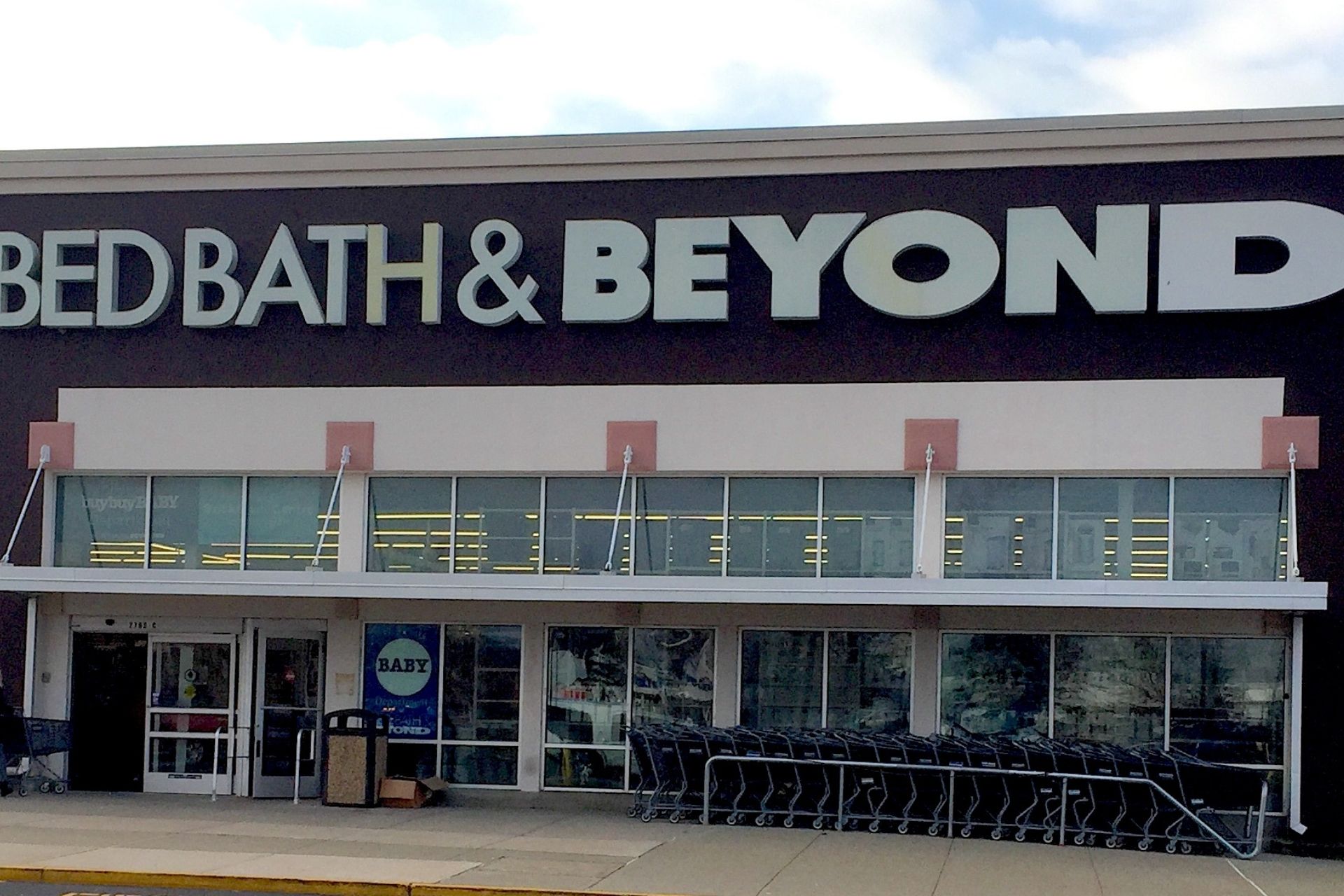Bed Bath & Beyond adjusted earnings for its first quarter turned positive but didn’t meet a Wall Street estimate even as the company announced better-than-expected sales and upgraded its financial guidance.
The company still posted a GAAP loss, although a narrower one, and big overall and comparable store sales gains year over year in the quarter, but against difficult comparisons with the pre-coronavirus 2019 period.
Net loss for the first quarter was $50.9 million, or 48 cents per diluted share, versus $302.3 million, or $2.44 per diluted share, in the year-prior period.
Adjusted earnings were $4.9 million, or five cents per diluted share, versus an adjusted loss of $242.8 million, or $1.96 per diluted share in the year-earlier quarter.
Bed Bath & Beyond earnings came in short of a MarketBeat-published analyst average estimate of eight cents per share, but the retailer topped a sales estimate of $1.87 billion.
Net sales were $1.95 billion versus $1.31 billion in the year-earlier quarter, while operating loss was $71.9 million versus $460.9 million in the year-previous period.
Comparable sales increased 86% in the period year over year as Bed Bath & Beyond reopened stores closed during the pandemic. Comp sales increased 3% versus the 2019 period. The company reported 84% digital sales growth on a two-year basis.
Sales in the first quarter of 2019 were $2.57 billion, and net loss was $371.1 million, or $2.91 per diluted share. Since then, Bed Bath & Beyond has closed some namesake stores, and it divested its Cost Plus World Market division and other operations including Christmas Tree Shops, One Kings Lane and PersonalizationMall.com.
Based on its first-quarter performance and expectations for the second quarter, Bed Bath & Beyond raised its fiscal 2021 guidance outlook with a net sales estimate of $8.2 billion to $8.4 billion, up from $8 billion to $8.2 billion, while raising its comparable sales estimate to the low-single digit growth range versus its previously communicated guidance for a flat reading. The company also raised its adjusted EBITDA guidance to a range of $520 million to $540 million from $500 million to $525 million and re-introduces a full fiscal year 2021 adjusted EPS range of $1.40 to $1.55.
In announcing the financial results, Mark Tritton, Bed Bath & Beyond president and CEO, said, “We have started the year in a position of strength and are clearly on track to accomplish our goals. Twenty twenty-one marks the first year of our three-year transformation following the groundwork we laid in 2020, a year of historic and necessary change for this organization against the backdrop of unprecedented challenges due to COVID-19. For the first quarter, we delivered our fourth consecutive quarter of comparable sales growth with gross margin expansion exceeding our expectations. These results demonstrate continued momentum with our strategies as we progress towards the goals we outlined at year-end and at our Investor Day.
“During the quarter, we successfully launched our margin-accretive, customer-inspired owned brands and accelerated growth with our Digital First, Omni-Always focus. We are re-establishing our authority in home, recapturing market share and unlocking our full potential. We continue to execute quarter after quarter, and we are pleased to be raising our full-year guidance outlook today. We have made meaningful progress against our transformational pillars during this early stage of our multi-year plan.”
In a first quarter conference call, Tritton said Bed Bath & Beyond is accelerating growth through its digital-first “omni-always” approach, with the first quarter sales coming in with 38% e-commerce penetration even as customers returned to shopping in stores. The first- quarter digital penetration is nearly double that of 2019 levels, he said, underscoring the importance of online sales to the Bed Bath & Beyond business. Digital sales grew on a two-year basis by 84%, and Tritton said that the company continues to upgrade the customer experience while expanding same-day delivery capabilities in the United States and Canada.
Tritton added that the kitchenware boom evident in the company’s first-quarter 2020 results wasn’t a “one-and-done” surge, and he pointed to double-digit comps in that category on 2019 numbers.





